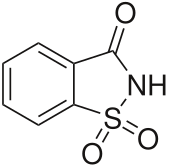I just saw a fascinating article
about reducing cancer linguistically at the blog PatientPOV. At the NationalInstitutes of Health Consensus Development meeting earlier this month, a panel of
doctors and researchers came up with this very unusual suggestion.
The panel was investigating prostate
cancer. This condition is prevalent in the U.S., and today more than 2.5
million American men are prostate cancer survivors. But it is often a slow-growing
cancer that doesn’t develop any symptoms. Not that it’s completely harmless - the
severe form of prostate cancer is horrible and will likely kill 33,000 men this
year. But most (approximately 70%) diagnoses are for the low-grade form. There
is no difference between the longevity of men with no prostate cancer at all
and the longevity of those with low-grade cancer. Yet 90% of men who are told
they have prostate cancer seek aggressive treatment, which is painful and often
causes incontinence and impotence.
The panel was discussing two
different, less harsh treatment strategies called “active surveillance” and
“watchful waiting”. Active surveillance means not treating the condition, but
scheduling frequent exams and biopsies to monitor the situation. Watchful
waiting entails educating men about possible symptoms and then just waiting for
those symptoms to appear before pursuing treatment. The panel’s goal was to determine
if and/or how these techniques should be encouraged as treatment options.
Upon reviewing all the data we have
now, the panel concluded that these observational approaches are underutilized.
They made many recommendations that are quite common from these sorts of panels:
we need to develop better diagnostic tests to distinguish the risky cancer from
the not-so-harmful cancer, we should educate doctors so that they have the best
information to give patients, and (especially) someone should fund lots more
research into different aspects of this problem. On that note, a large study on
active surveillance and diet recently began accepting patients at 12 different
sites here in Georgia. But in addition to these traditional approaches, the
panel also came up with one really unique idea:
Stop calling the low-risk form of the disease cancer.
Instead of telling men with low
(under 10 ng/mL) levels of the protein PSA and borderline biopsy results (Gleason
scores of 6 or less) that they have
prostate cancer, the panel recommended that doctors avoid the emotionally
charged word. While the panel did not suggest a replacement term, wording such
as “prostate alert” or “idle tumor” has been proposed.
This seems like a reasonable idea
to me. I’m not exactly an average patient. I’m a professional scientist who can
pronounce things like dehydroepiandroesterone and androstenedione. I understand statistical analysis and I read medical
journals. And I still find the word “cancer” to be powerfully intimidating. I
think the stress of hearing “you have cancer” would force me to act, and it
wouldn’t really matter if the action was logical or in my long-term best
interest. I would want to actively fight cancer.
But if a doctor told me something
along the lines of “You have some abnormal cells. Right now, they’re not
hurting you, but some day they might turn into cancer” I’d be far less anxious
and more likely to consider all my options. I know that technically cancer is
abnormal cells, but that phrasing just does not provoke the same visceral
response.
This recommendation is not drawing
any attention right now, but it seems like it should. It’s a very simple way to
clarify risk and help patients understand their options. Sure, it could be hard to implement a cultural change like this. But not that long ago, people didn't talk about cancer. Now we've managed to raise billions of dollars and taken over an entire color for cancer awareness. I don't think adjusting terminology is so daunting that we should just ignore experts' advice.













